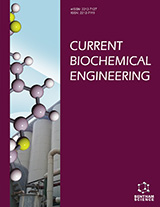Abstract
This fundamental research work has aimed to investigate an advanced study on temperature-affected electro-optic characteristics of In0.73Al0.07Ga0.20As/. In Pheterointerface nanostructure in fiber-optic communication systems underpolarizing transverse bi-modes. In this advanced computing, under the various effects of temperatures, the various energies values of C-V(Conduction-Valence),quasi-Fermi sublevels with the various values of carriers of charge (in cm-3) have been illustrated curvedly. Next, the temperature-dependent computing performances of NI(Near Infrared) material gains within the photon's wavelength and concentration values of carriers under polarizing transverse bi-modes have been investigated graphically in this chapter. In addition, temperature-influenced performances of ROFs (Relaxation Oscillation Frequencies) in Hz with various current values in Acm-2 have been computed graphically. Further, the graphical performances of peak RIC (Refractive Index Change) with various temperature values for both polarize TE & TM-modes. In the computational investigation through the results, the crest values of NI-material gain amplification have been found corresponding to two peaks at the photon's wavelengths ~ 1331 nm and 1551 nm for various effects of temperatures under TE-mode. Although, under TM-mode, the crest value of NI-material gain amplification has been found,corresponding to a single peak at the wavelength ~ 1331 nm for various effects of temperatures. The NI-emitting light of peak intensity emitted by the proposed nanoscale-heterogeneous junction-based nanostructure of wavelengths ~ 1331 nm and 1551 nm has been largely utilized in the FCs (Fiber-optic Cables) based NItelecommunications and several NI-therapies by TIM (Total Internal-reflection Method) with minimal attenuation loss of appropriate NI-signals (in dB km-1) on account of no dispersions, no scattering and no absorptions in the emerging and advanced nanotechnology, medical nanosciences and nanoscale-biotechnology.






















